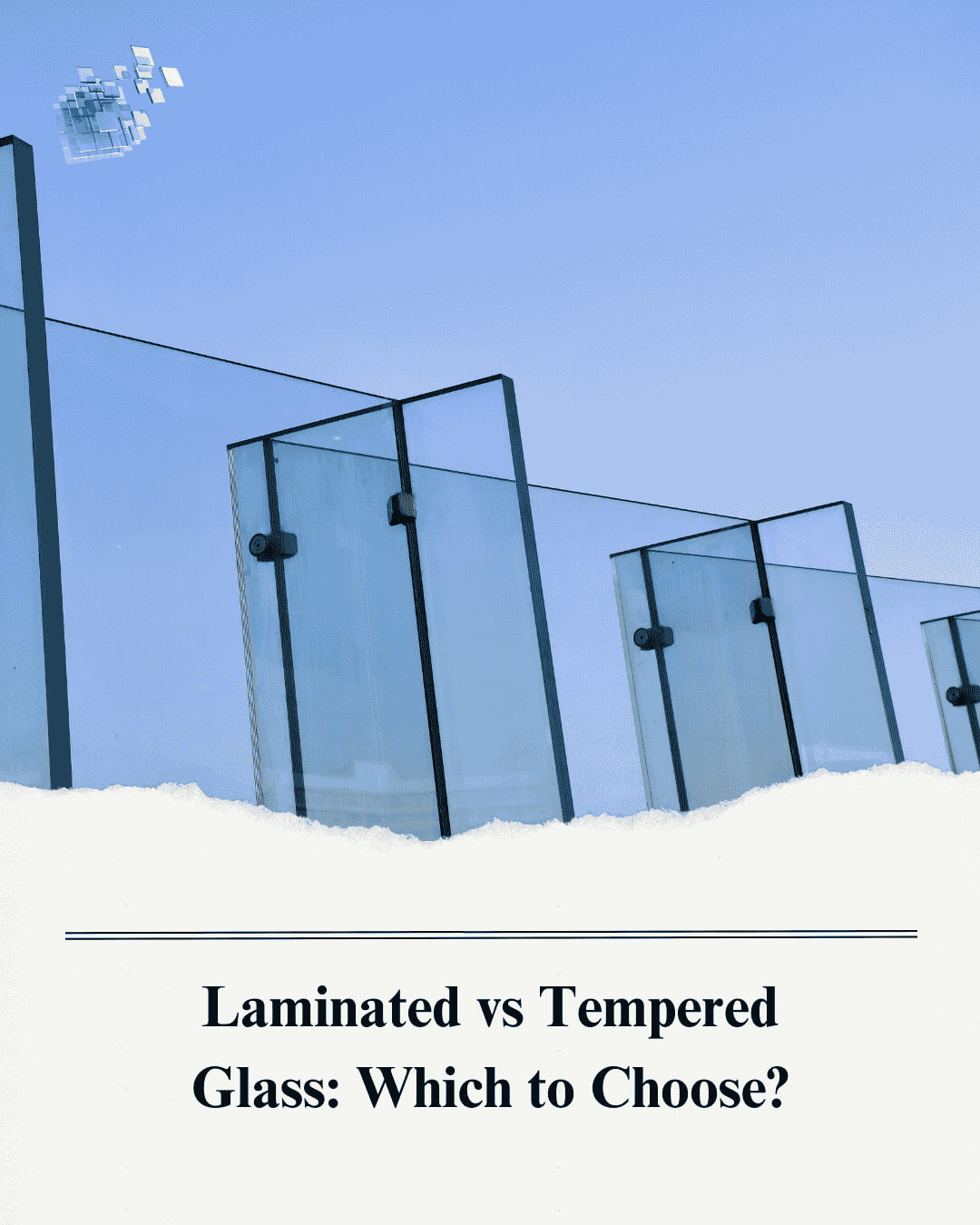
In building construction, architecture, or interior design, choosing the right kind of safety glass is paramount. Glass is not just a visual feature—it plays an essential role in safety, durability, and functionality. Two of the most common forms of safety glass are laminated glass and tempered glass.
Each is unique in its characteristics, uses, advantages, and disadvantages. In this guide, we clarify laminated glass and tempered glass at length and compare their features so you can make an educated decision for your project.
Laminated glass is created by bonding two or more sheets of glass with an interlayer, normally polyvinyl butyral (PVB). When the glass breaks, the pieces remain attached to the interlayer, preventing the possibility of injury and maintaining the integrity of the structure.
Some of the major advantages of laminated glass include:
This is the reason why laminated glass is so widely used for outside windows, store fronts, skylights, and even sliding glass doors, where safety and strength are the biggest issues.
Tempered, or toughened glass, is created by heating regular glass and rapidly cooling it. This thermal treatment lends its distinctive strength two to four or even five times the regular annealed glass.
If tempered glass breaks, it breaks into blunt small fragments rather than the sharp jagged pieces of glass, lessening the chance of serious injury.
Tempered glass is widely applied in shower enclosures, partitions, and shower glass rooms where strength and safety are also essential.
| Feature | Laminated Glass | Tempered Glass |
|---|---|---|
| Safety on Breakage | Holds together when broken, shards stick to interlayer | Shatters into blunt small fragments |
| Impact Resistance | More resistant to forced entry and impact from debris | Very resistant, but on shattering, fails completely |
| UV Protection & Noise Control | Good UV protection and sound control | Poor UV and noise protection |
| Cost & Weight | More costly, heavier panels | Less costly, lighter panels |
| Customizability | Can be frosted, tinted, or layered | Cannot be cut or altered after tempering |
Advantages:
Limitations:
Advantages:
Limitations:
Laminated or tempered glass will depend on what you require for your project.
Select Laminated Glass when:
Select Tempered Glass if:
Laminated Glass
Tempered Glass
Tempered and laminated glass are employed together in most instances. Laminated glass, for instance, can be created using tempered panels in order to merge the advantages of both. This composite material is more impact-resistant, safe, and durable.
Tempered glass is stronger and safer on impact, shattering into small blunt pieces. Laminated glass offers better safety, UV protection, and noise control, as it holds together when broken.
Tempered glass shatters completely into small fragments when broken, offering no residual strength. It also cannot be cut, drilled, or reshaped after tempering.
Yes, laminated glass can be used instead of tempered glass, especially where safety, soundproofing, and UV protection are priorities. However, tempered glass is better for high-impact resistance and cost efficiency.
Both laminated glass and tempered glass are excellent choices depending on where and how you intend to use them. Laminated glass is superior in safety, UV blocking, and soundproofing, hence highly appropriate for outdoor use and high-security environments. Tempered glass provides durability, safety, and value, hence ideal for glass sliding doors, kitchen cabinets, beautiful glass splashbacks, and glass shower rooms.
When selecting laminated or tempered glass, always remember safety requirements, price, appearance, and durability over time. It would be best to hire an expert glass manufacturer or installer to ensure that your selected glass for your use is suitable to your intention.
Murtaza Glass & Frames Trd LLC is the authorized service provider glass work in Dubai, and provides the satisfying architect.